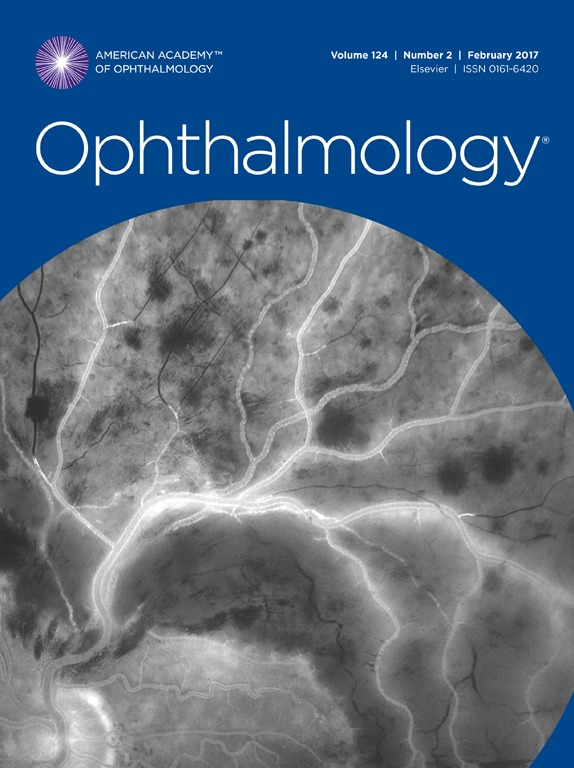Special Commentary: Cerebral/Cortical Visual Impairment Working Definition
IF 13.1
1区 医学
Q1 OPHTHALMOLOGY
引用次数: 0
Abstract
Cerebral/cortical visual impairment (CVI), a brain-based condition, has emerged as a leading cause of pediatric visual impairment in the United States and other industrialized nations. The National Eye Institute (NEI) recognized CVI as a priority area for research as part of their 2021 NEI Vision for the Future Strategic Plan and partnered with the Eunice Kennedy Shriver National Institute of Child Health and Human Development and the National Institute of Neurologic Disorders and Stroke within the National Institutes of Health (NIH) to sponsor a CVI Workshop in November 2023. A panel consisting of a group of clinicians with expertise in diagnosing CVI convened to draft a working definition for this condition. Five key elements were identified: (1) CVI encompasses a spectrum of visual impairments caused by an underlying brain abnormality that affects the development of visual processing pathways and is characterized by deficits in visual function and functional vision; (2) the visual dysfunction in CVI is greater than expected by any comorbid ocular conditions alone; (3) the visual dysfunction in CVI may manifest as lower-order or higher-order afferent visual deficits, or both, leading to characteristic behaviors in affected individuals; (4) although CVI may be comorbid with other neurodevelopmental disorders, CVI is not primarily a disorder of language, learning, or social communication; and (5) the underlying neurologic insult of the developing brain may go unrecognized or undiagnosed until later in life. Future work is needed to achieve consensus on nomenclature, diagnostic criteria, and strategies for early identification and intervention. The NIH is developing a CVI registry to collect relevant demographic and clinical data prospectively and longitudinally to help inform future research questions and to provide insight into considerations for future clinical trials in the field of CVI.
特别评论:脑/皮层视觉障碍工作定义:美国国立卫生研究院 CVI 研讨会报告。
脑/皮层视力损伤(CVI)是一种基于大脑的疾病,已成为美国和其他工业化国家儿童视力损伤的主要原因。美国国家眼科研究所(NEI)将 CVI 视为其 2021 年 NEI 未来愿景战略计划的优先研究领域,并与美国国立卫生研究院(NIH)下属的尤妮斯-肯尼迪-施莱佛国家儿童健康与人类发展研究所(Eunice Kennedy Shriver National Institute of Child Health and Human Development)和国家神经疾病与中风研究所(NIH National Institute of Neurologic Disorders and Stroke)合作,于 2023 年 11 月主办了 CVI 研讨会。一个由在诊断 CVI 方面具有专长的临床医生组成的小组召开会议,起草了该病症的工作定义。确定了五个关键要素:(1)CVI 包含一系列视觉障碍,由潜在的大脑异常引起,影响视觉处理通路的发育,并以视觉功能和功能性视力缺陷为特征;(2)CVI 的视觉功能障碍比任何合并眼部疾病单独预期的要严重;(3) CVI 的视觉功能障碍可能表现为低阶或高阶传入视觉障碍,或两者兼而有之,从而导致患者的特征性行为;(4) 尽管 CVI 可能合并其他神经发育障碍,但 CVI 主要不是语言、学习或社会交流障碍;以及 (5) 大脑发育过程中潜在的神经损伤可能直到晚年才被发现或诊断出来。未来的工作需要就术语、诊断标准以及早期识别和干预策略达成共识。美国国立卫生研究院(NIH)正在建立一个 CVI 登记中心,以前瞻性和纵向的方式收集相关的人口统计学和临床数据,从而为未来的研究问题提供信息,并为 CVI 领域未来的临床试验提供深入的考虑。
本文章由计算机程序翻译,如有差异,请以英文原文为准。
求助全文
约1分钟内获得全文
求助全文
来源期刊

Ophthalmology
医学-眼科学
CiteScore
22.30
自引率
3.60%
发文量
412
审稿时长
18 days
期刊介绍:
The journal Ophthalmology, from the American Academy of Ophthalmology, contributes to society by publishing research in clinical and basic science related to vision.It upholds excellence through unbiased peer-review, fostering innovation, promoting discovery, and encouraging lifelong learning.
 求助内容:
求助内容: 应助结果提醒方式:
应助结果提醒方式:


